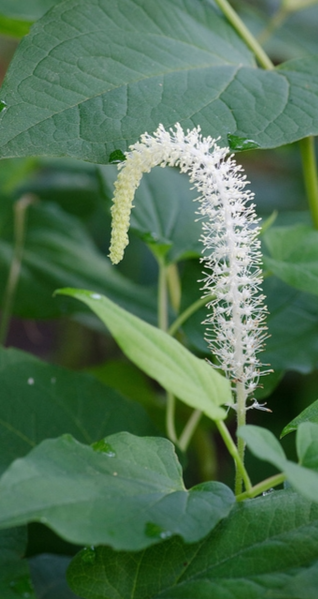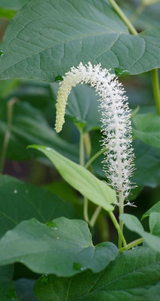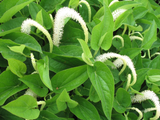- 2024 Native Trees
- >
- Herbaceous Plants
- >
- Lizard’s Tail (Saururus cernuus)
Lizard’s Tail (Saururus cernuus)
Height: Foliage—1 to 2 feet, flowerheads—4 to 12 inches long
Bloom Time: June to September
Bloom Description: Elongated white flower spikes on short stalks
Sun: Full sun to shade
Attracts: Pollinators
Lizard’s Tail Family
Native to Jefferson County
Lizard’s Tail, also known as Water Dragon, is an emergent wetland plant found in shallow water, at pond edges, and in swampy areas in full sun to part shade, although the plant will also flower in full shade. It has an upright, slightly sprawling growth habit, with arrowhead-shaped foliage growing up to 2 feet high. The flowers and foliage of Lizard’s Tail have a citrusy or sassafras-like scent.
Lizard’s tail is well-suited to water gardens, wetlands, and other areas with shallow, standing water.
The long, nodding flower stalks of Lizard’s tail support specialist bees and attract beneficial insects. Flowers fade into small, green warty fruits along the stalk in a pattern that resembles a lizard’s tail. Wood ducks and other waterfowl are attracted to the seeds.
The plants have a rapid growth rate and will often colonize through a fibrous, rhizomatous root system. These root masses provide soil stabilization at the water’s edge, while the plant’s dense leaf masses provide habitat and cover for fish, birds, and other aquatic life, including turtles and amphibians. ■





